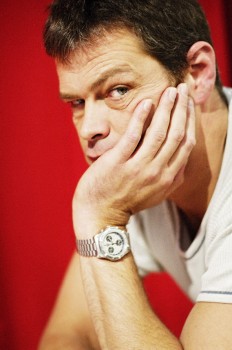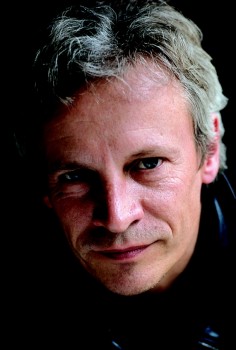Archive for December, 2009
Glenda Goss Dawn: Vieläkö lähetämme hänelle sikareja? [Do we still send him cigars?]
30 December 2009 | Mini reviews, Reviews
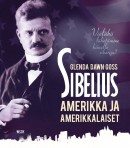 Vieläkö lähetämme hänelle sikareja? Sibelius, Amerikka ja amerikkalaiset. 24 tarinaa
Vieläkö lähetämme hänelle sikareja? Sibelius, Amerikka ja amerikkalaiset. 24 tarinaa
[Do we still send him cigars? Sibelius, America and Americans: 24 stories]
Translated into Finnish (from the manuscript) by Martti Haapakoski
Helsinki: WSOY, 2009. 268 p., ill.
ISBN 978-951-0-35517-6
€ 35, paperback
Finnish composer Jean Sibelius (1865–1957) was very highly regarded in the United States; the world’s first Sibelius appreciation society was set up in a small town in Pennsylvania, and at one time there was even a sort of Sibelius cult in Boston. In 1935 American radio listeners voted Sibelius their favourite living composer of symphonies. Walt Disney was an admirer of Sibelius’ music, though his plan to transfer The Swan of Tuonela to the big screen was never realised. Sibelius’ affinity for fine cigars was widely known, and sending boxes of cigars to the composer became a typical expression of admiration among Americans. Cigars were sent by regular citizens as well as prominent figures like Louis Armstrong. This book consists of 24 accounts describing interactions between Sibelius and Americans. It also details rises and falls in Sibelius’ popularity.Glenda Dawn Goss, is an American expert on Sibelius and possesses a doctorate in musicology. She has lectured at the Sibelius Academy in Helsinki since 2007.
Suomalaiset tutkimusmatkat [Finnish scientific expeditions]
23 December 2009 | Mini reviews, Reviews
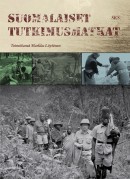 Suomalaiset tutkimusmatkat
Suomalaiset tutkimusmatkat
[Finnish scientific expeditions]
Toim. [Edited by] Markku Löytönen
Helsinki: Suomalaisen Kirjallisuuden Seura, 2009. 480 p., ill.
ISBN 978-951-746-774-2
€ 64, hardback
This book is a comprehensive survey of Finnish scientific expeditions from the 18th century up to the present day. It covers the sciences that traditionally involve field research: geology and palaeontology, botany and zoology, geography, oceanography, archaeology, linguistics, and anthropology. The book consists of 13 chapters written by experts in their respective fields. The best-known expeditions undertaken by Finns are A. E. Nordenskiöld’s voyage to the North-East Passage, J. G. Granö’s expedition to the Altai Mountains and Rafael Karsten’s travels with Amazonian headhunters. Other chapters tell of current fieldwork projects involving Finns, including research in the Amazon region and Antarctica, as well as the high Arctic. This book does not confine itself to Earth-bound scientific research; it even includes cosmology and space research – areas where scientific equipment developed by Finns have played important roles.
Midwinter in a minor key
23 December 2009 | Letter from the Editors
Finland’s end-of-year celebrations, both Christmas and New Year, take place in a thoroughly muted mode. At noon on Christmas Eve the Christmas Peace is rung out from the mediaeval cathedral in Turku, with the pious and seldom realised hope that peace and harmony will be unbroken for the following twelve days.
It’s true, though, that there’s little of the carousing that characterises Christmas celebrations further south; by and large, people stay behind closed doors, and there’s plenty of time, in the dark mornings and evenings and the brief twilight between them, to eat and drink and sleep – and, for those whose souls are not entirely claimed by the television and food-induced torpor, to read. More…
A day at the zoo
23 December 2009 | Children's books, Fiction
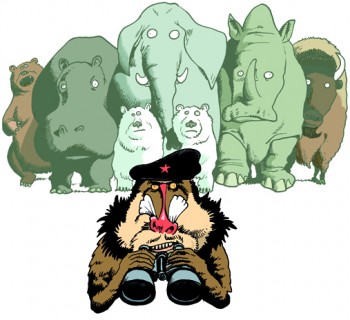
Extracts from the children’s book Zoo – eläimellinen tarina (‘Zoo – a bestial story’, WSOY, 2009, illustrated by Pertti Jarla)
The place: A zoo, once the property of the city, now privatised and accountable to corporate stockholders
The characters: The animals of the zoo, in particular Gandhi, a Sumatran tiger (false-teeth, poor vision, pacifist), Che, a male mandrill baboon (militant), and Mother Teresa, a hammer-headed bat (elderly); the zookeeper Sihvonen (stands up for the animals, recently fired); the new zoo director (whose main goal is to maximise profits); the shareholders’ committee (awaiting their earnings)
The action: after a demonstration in which all the animals played dead, the animals are staging a revolution to demand that Sihvonen be reinstated
![]()
The animals crowded into the foyer. The hallway was full of every kind of creature, with all of their skin, fur and feathers steaming in the warm indoor air. Che stood at the top of the the stairs, looked down at his troops, and gave the order in mime for everybody to be quiet.
‘Reconnaissance?’ he said, his voice subdued.
‘Ready!’ the leaf-tailed geckos announced.
‘Head in!’ Che commanded. More…
Candidates for the Runeberg Prize
23 December 2009 | In the news
Seven books were chosen out of approximately 200 to be the candidates of the Runeberg Prize, to be awarded on 5 February 2010. More…
In a class of one’s own
18 December 2009 | Reviews
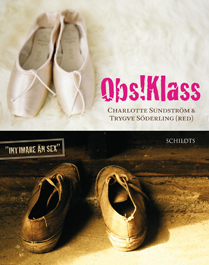 Obs! Klass
Obs! Klass
Red. [Ed. by] Charlotte Sundström & Trygve Söderling
Helsingfors: Schildts, 2009. 288 p.
ISBN 978-951-50-1891-5
€27, paperback
De andra. En bok om klass
Red. [Ed. by] Silja Hiidenheimo, Fredrik Lång, Tapani Ritamäki, Anna Rotkirch
Helsingfors: Söderströms, 2009. 288 p.
ISBN 978-951-522-665-5
€26.90, paperback
Me muut. Kirjoituksia yhteiskuntaluokista
Helsinki: Teos, 2009. 267 p.
ISBN 978-951-851-259-5
€27.90, paperback
At some time in their lives, all members of the Swedish-speaking minority in Finland have been confronted with the phrase ‘Swedish-speaking better people’ [Svenska talande bättre folk], uttered in tones of contempt. Encouraged by news and entertainment media with little regard for the consequences, Finland’s Finnish-speaking majority is hopelessly fascinated by the image of us Finland-Swedes as a uniform and monolithic haute bourgeoisie that resides in the coveted Helsinki neighbourhoods of Eira and Brunnsparken. More…
Linnut vauhdissa [Birds caught in motion]
18 December 2009 | Mini reviews, Reviews
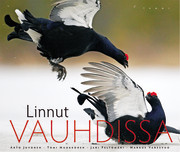 Arto Juvonen & Tomi Muukkonen & Jari Peltomäki & Markus Varesvuo
Arto Juvonen & Tomi Muukkonen & Jari Peltomäki & Markus Varesvuo
Linnut vauhdissa
[Birds caught in motion]
Helsinki: Tammi, 2009. 191 p., ill.
ISBN 978-951-31-4605-7
€ 39, hardback
Linnut vauhdissa features the work of several specialist bird photographers, contains astonishingly sharp photos of birds caught in mid-flight. This book breaks with convention by presenting surprising analogies and juxtapositions of photographs, thereby providing a more in-depth viewing experience than mere biological facts and identification of species. The majority of the photos were shot in Finland, where the Nordic light and winter snow offer unique qualities for nature photography. The preface was written by Hannu Hautala, arguably Finland’s best-known nature photographer. All of the photographers whose work is presented here are experienced birders. They also maintain a website that attracts many visitors, both from Finland and abroad.
In the detail?
11 December 2009 | Essays, Non-fiction
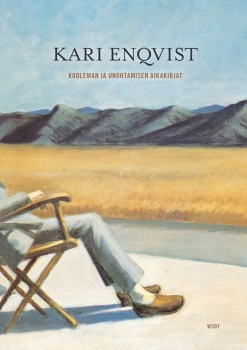 Extracts from Kuoleman ja unohtamisen aikakirjat (‘Chronicles of death and oblivion’, WSOY, 2009)
Extracts from Kuoleman ja unohtamisen aikakirjat (‘Chronicles of death and oblivion’, WSOY, 2009)
What’s the meaning of life? There are those who seek it in religion, while for others that is the last place to look. The scientist Kari Enqvist ponders why some people, including himself, seem physiologically immune to the lure of faith. Perhaps, he suggests, we should look for significance not in the big picture, but in the marvel of the fleeting moment
As a young boy I must have held religious beliefs. However, I cannot pinpoint exactly when they disappeared. At some point I eventually stopped saying my evening prayers, but I am unable to remember why or when this happened. ‘I was born in a time when the majority of young people had lost faith in God, for the same reason their elders had had it – without knowing why,’ writes the Portuguese poet Fernando Pessoa in The Book of Disquiet. More…
Best foot forward
11 December 2009 | This 'n' that

Diem Hy and her trademark curls
When you step outside your office, what do you see? Not the streets and buildings, although photographing them could be an interesting project too, especially when you live and work in a city as self-consciously monumental as Helsinki. No; we’re talking about the shifting landscape of people and their clothes, as documented in the primarily photographic website Hel Looks.
A ‘hobby project’ by Liisa Jokinen and Sampo Karjalainen, Hel Looks documents fashion in the streets and clubs of Helsinki. It’s self-consciously a fashion project – in addition to documenting Finnish looks, Jokinen and Karjalainen want to ‘encourage people to dress and create their own styles… to promote emerging Finnish designers… because we like fashion, clothing, young people and photography.’
For us, though, the stories the pictures tell are more fascinating. Each entry shows one or two people. usually photographed in the street, accompanied by a brief quote from the subject. Some simply roll-call the designers they’re wearing, which may be interesting for the fashion pack but not so interesting for the rest of us. But others offer self-analyses that could, at the very least, furnish the beginnings of a short story. Diem Hy, 17, for example, is shown in jeans and a second-hand leather jacket: ‘My hair is my trade mark. I’m not sure if I could live without my curls’; Simo, 18, likes ‘all clothes that date from before 1992’, Buster, 18, dresses in his grandfather’s clothes and likes to think ‘that I can dress old-fashioned but keep my mind fresh.’ Tiia, 22, simply ‘likes the colour blue’ (and indeed is dressed in nothing else). The range of selves, and self-presentations, is endless. Any authors in search of a character can simply apply here.
Nordic prize
11 December 2009 | In the news
The Finnish nominees for the Nordic Council’s Literary Prize, to be awarded in March 2010, are the novels Puhdistus (‘Purge’, the winner of the Finlandia Prize for Fiction in 2008) by Sofi Oksanen, and Glitterscenen (‘The Glitter Scene’, 2009) by Monika Fagerholm.
The prize, worth €47,000, will be selected by a jury from a shortlist of 11 works from the Nordic countries. The most recent Finnish winner of the prize was Kari Hotakainen’s Juoksuhaudantie (‘Trench Road’, which also won the Finlandia Prize for Fiction) in 2004.
Talvisota muiden silmin [The Winter War through the eyes of others]
11 December 2009 | Mini reviews, Reviews
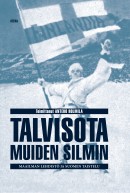 Talvisota muiden silmin. Maailman lehdistö ja Suomen taistelu
Talvisota muiden silmin. Maailman lehdistö ja Suomen taistelu
[The Winter War through the eyes of others. The world press and Finland’s battle]
Toim. [Edited by] Antero Holmila
Jyväskylä: Atena, 2009. 237 p., ill.
ISBN 978-951-796-589-7
€ 36, hardback
November 2009 marks the 70th anniversary of the outbreak of the Winter War in Finland. Based on extensive archival research, this book traces discourses (media, private diaries) about this war in various countries: the Soviet Union, Sweden, Germany, Italy, Greece, Britain, France, Hungary, Japan, the United States and the United Kingdom. Japan’s favourable image of Finland arose from its own vehement opposition to Communism. Under the right-wing dictatorship in Greece, the Winter War provided an opportunity to emphasise the importance of a unified nation to safeguard the existence of its people. Britain expressed both moral support for Finland and doubt concerning the truth of news reports. In Finland, the view was repeatedly put forward that the Winter War would unite global opinion behind Finland against the Soviet Union. The essays in this book show that attitudes were varied, with a wide range of critical voices.
Vesa Karonen & Panu Rajala: Yrjö Jylhä, talvisodan runoilija [Yrjö Jylhä, poet of the Winter War]
11 December 2009 | Mini reviews, Reviews
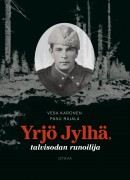 Yrjö Jylhä, talvisodan runoilija
Yrjö Jylhä, talvisodan runoilija
[Yrjö Jylhä, poet of the Winter War]
Helsinki: Otava, 2009. 351 p., ill.
ISBN 978-951-1-23840-9
€ 35, hardback
Yrjö Jylhä (1903–1957) was a poet and translator whose collection of poems entitled Kiirastuli (‘Purgatory’), published in 1941 after the Winter War, is one of the most popular works of Finnish verse. Jylhä served as commander of a Karelian army company during the Winter War. A certain sternness, melancholy and pessimism about life are considered to be characteristic of Jylhä’s writing. The author of this book, the first biography of Jylhä, had access to new source materials including letters written from the front. The war meant not only great change for Jylhä as a writer, but also a test of his own limits as a leader and a soldier among other men. After the war, Jylhä’s reputation began to wane – partly for political reasons, as people took a more dismissive attitude towards war poetry about the Finnish fatherland. Jylhä suffered from a serious illness and artistic frustration in his middle age, which led him to take his own life.
On the waves of our skin
4 December 2009 | Fiction, poetry
The poems in Ilpo Tiihonen’s new collection, Jumalan sumu (‘God’s mist’) – about fakirs, beggars, poets, lovers and life – are tinged with a gentle sense of the ephemerality of human life (see Gatecrashing the universe)
Poems from Jumalan sumu (‘God’s mist’, WSOY, 2009)
SANTO PAN
These mornings when beggars
station themselves at church doors
and a little grace slips through
the fingers of some of us,
it seems for a moment good
That crows are flying about
and princes’ bones are clattering in huge sarcophagi
And now, with a basic shape planned
for the daily bread,
Early morning wakes up in Florence
with black flour in its fingernails More…

